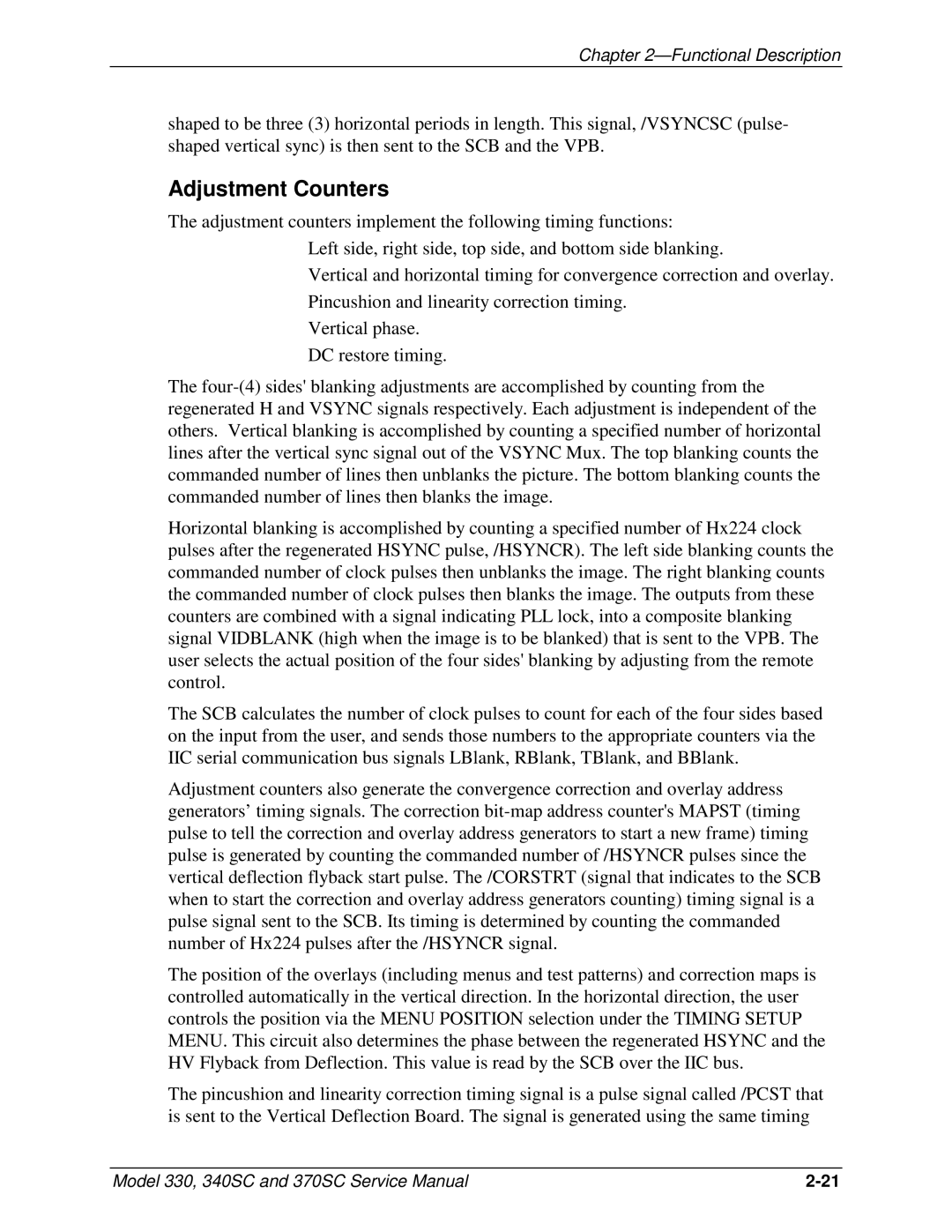
Chapter
shaped to be three (3) horizontal periods in length. This signal, /VSYNCSC (pulse- shaped vertical sync) is then sent to the SCB and the VPB.
Adjustment Counters
The adjustment counters implement the following timing functions:
Left side, right side, top side, and bottom side blanking.
Vertical and horizontal timing for convergence correction and overlay.
Pincushion and linearity correction timing.
Vertical phase.
DC restore timing.
The
Horizontal blanking is accomplished by counting a specified number of Hx224 clock pulses after the regenerated HSYNC pulse, /HSYNCR). The left side blanking counts the commanded number of clock pulses then unblanks the image. The right blanking counts the commanded number of clock pulses then blanks the image. The outputs from these counters are combined with a signal indicating PLL lock, into a composite blanking signal VIDBLANK (high when the image is to be blanked) that is sent to the VPB. The user selects the actual position of the four sides' blanking by adjusting from the remote control.
The SCB calculates the number of clock pulses to count for each of the four sides based on the input from the user, and sends those numbers to the appropriate counters via the IIC serial communication bus signals LBlank, RBlank, TBlank, and BBlank.
Adjustment counters also generate the convergence correction and overlay address generators’ timing signals. The correction
The position of the overlays (including menus and test patterns) and correction maps is controlled automatically in the vertical direction. In the horizontal direction, the user controls the position via the MENU POSITION selection under the TIMING SETUP MENU. This circuit also determines the phase between the regenerated HSYNC and the HV Flyback from Deflection. This value is read by the SCB over the IIC bus.
The pincushion and linearity correction timing signal is a pulse signal called /PCST that is sent to the Vertical Deflection Board. The signal is generated using the same timing
Model 330, 340SC and 370SC Service Manual |
